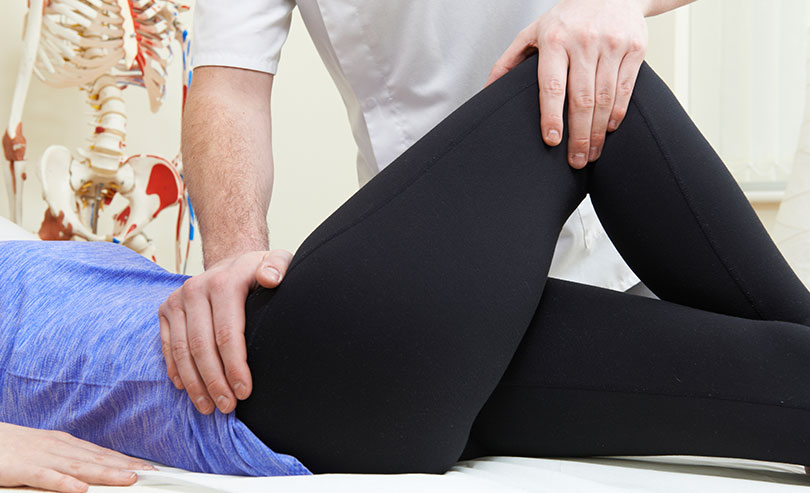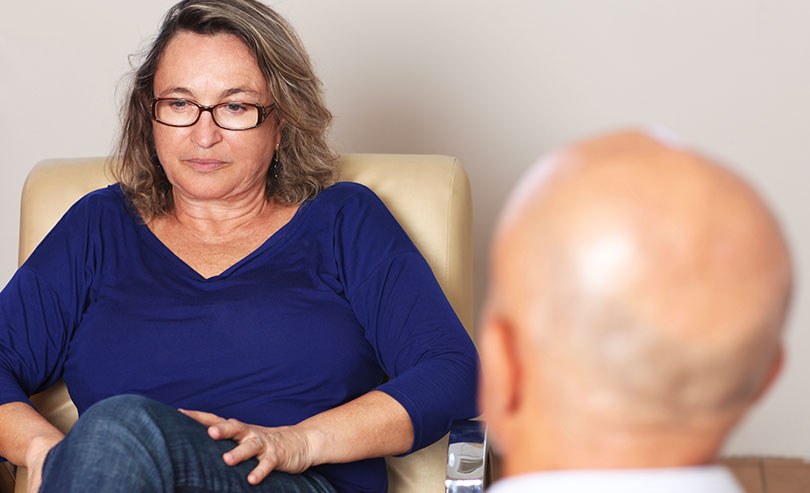Photo Credit: Highwaystarz-Photography / iStockPhoto.com
Physiotherapy for OAB
The muscles of the bladder wall are largely to blame for the urgency and incontinence that point to overactive bladder (OAB). Known as the detrusor muscles, these are important for urination: when they contract, they force urine out though the urethra, and then relax once the bladder is empty. In OAB, these muscles contract too often, and at unpredictable times.
However, the bladder doesn’t operate on its own — other parts of your body play a role in bladder control, too. From surrounding muscles to neighboring organs and psychological influences, different sorts of malfunctions can prolong OAB symptoms, and impact your quality of life.
It follows that the better you can manage this web of processes and muscle groups, the better you will be able to control your bladder. Physiotherapy will help you to isolate and treat all these problems that may be feeding your condition.
How a Physiotherapist Can Help
Any fitness routine — whether it aims to build endurance, tone your arms or strengthen your bladder — begins with accurate information and a good understanding of the forces at play. This is where physiotherapists come in: experts in anatomy and muscle function, they will be able to find the source of your problem, and explain it to you in plain terms.
Physiotherapy for OAB can help you retrain your bladder with targeted exercises and a schedule that suits your particular OAB discomforts. They will be able to show you a range of exercises and help you master the movements so you can get the most from the exercises. Some techniques to learn may include:
- Perineal pressure
- Pelvic floor exercises
- Low abdominal contractions
- Anxiety-reducing exercises
- Posture correction
- Distraction techniques
Your physiotherapist is not only your guide, but also your monitor. The key is to consult with them regularly so they can assess your progress, and recommend appropriate changes to your plan. They can also help you change parts of your lifestyle that could be making things worse, like a bladder-irritating diet, bowel dysfunction, or persistent anxiety that might be tensing your body.
Best Exercises to Do at Home
Although your physiotherapist is one of your closest allies, there’s plenty you can do on your own to overcome your OAB. When you leave the physio office and get back to the comfort of your own home, be sure to incorporate these bladder-strengthening exercises into your daily routine:
Kegels
Experts agree: the best way to improve your bladder control is to strengthen your pelvic floor muscles. These muscles hold up the organs in your pelvis, so a stronger pelvic floor means the opening of your bladder has the support it needs to function well.
While it isn’t your fault, your daily decisions might be making your OAB worse and much more difficult to live with than it needs to be.
To get the most from Kegel exercises, you first need to to identify and isolate the right band of muscle, which can be a bit tricky if you’ve never done it before. Try tightening your anus without contracting your buttocks, or squeezing your vaginal muscles without tensing your thighs or stomach muscles. The more you use the muscles around your pelvic floor, the less improvement you’ll see.
Be sure to do your Kegels daily, spacing out three sets over the course of each day. Begin by contracting your pelvic floor and holding for a count of three, then relaxing for the same count, and repeating this 15 times for one set. As your muscles get stronger, you can hold each contraction for a longer amount of time.
Vaginal Cones
You can strengthen your pelvic floor muscles from the inside, too. Specially-designed cones of varying weights can be inserted into the vagina, and “lifted” by the surrounding muscles. Beginning with lighter weights, you work up to holding them for longer periods of time. As the exercise becomes easier, you can work up to heavier weights.
Research has shown that vaginal cones can bring significant results: one study of 16 patients reported that urge incontinence, frequency and nocturia (the need to urinate during the night) all improved after using the cones for eight weeks.
Bladder Drills
It’s important to strengthen the supportive muscles around the bladder, but you can also strengthen the bladder itself. Although it may be a bit uncomfortable at first, learning to hold more urine in your bladder will actually improve your long-term control.
First, figure out how many times you need to urinate in a day. Do you need to go every hour? Every two hours? Once you know your personal schedule, you can begin to stretch out the period of time between each bathroom break by consciously holding your bladder for several extra minutes (or until you just can’t hold it any longer). Eventually, you’ll be able to hold more urine without leaking or so many sudden urges to go.
When Will You See Results?
Patience and perseverance matter. Bladder strengthening can seem like a slow process, especially at the start, since you can’t actually see the changes happening in your pelvic muscles. However, each day you stick to your routine brings you one step closer to a life without leaks.
Many people notice improvement within a month, though it may take up to two months to see any significant changes in incontinence. It can be helpful to record your symptoms in a journal, noting the frequency and severity of your leaks and urges to urinate, along with the exercises you’ve done that day. You’ll find motivation and encouragement in these notes as you continue to strengthen your bladder muscles, and if your progress seems to plateau, that record can help your doctor to determine why – and what to do about it.







